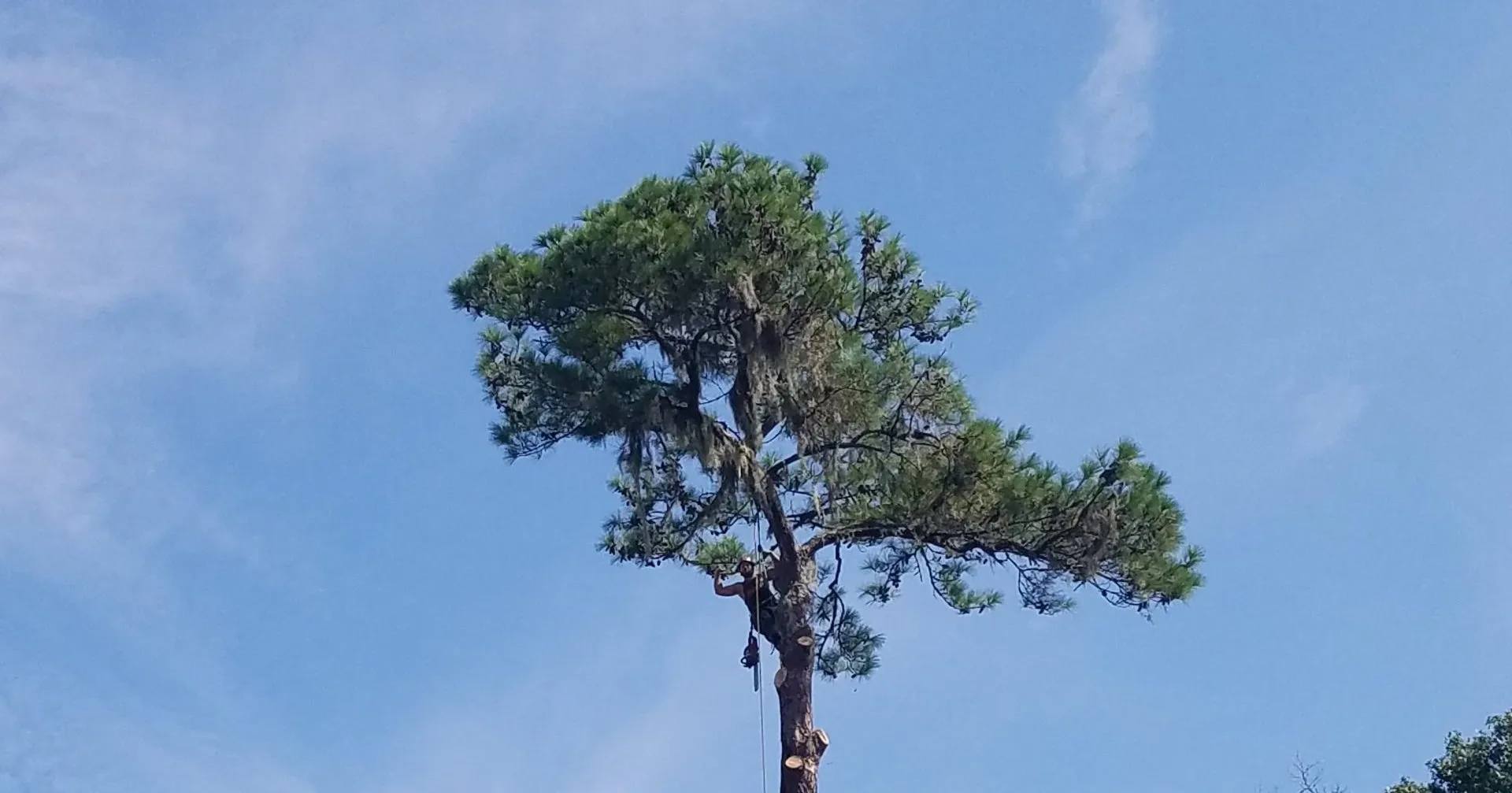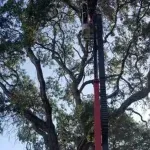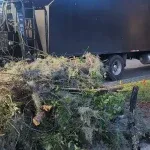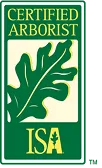
November 11, 2025
Loblolly pines are among the most widely planted trees in the southeastern United States, prized for their rapid growth, shade, and valuable timber. However, these pines are also highly vulnerable to several common diseases that can damage landscapes and forests if not addressed quickly. Fusiform rust, needle blight, pitch canker, and root rot are among the most serious threats, spreading rapidly when left untreated.
Homeowners and land managers must understand how to recognize early warning signs, such as browning needles, resin-soaked bark, or thinning crowns, to protect their investment. By spotting issues early, you can take proactive steps to maintain healthy pine stands and prevent costly tree loss. This guide will help you identify the most common loblolly pine diseases, understand their symptoms, and know when to call professional tree service experts. With the right care, your loblolly pines can remain strong, healthy, and resilient for years.
Overview of Loblolly Pine Health
Loblolly pines are hardy and adaptable, but their health can be compromised by stress factors such as drought, overcrowding, compacted soil, and insect infestations. When trees are stressed, they become more vulnerable to fungal pathogens and other diseases. Recognizing the difference between natural stress and disease is the first step toward effective management.
Healthy loblolly pines typically exhibit strong upright growth, dense crowns, and vibrant green needles. When these traits are absent, it may indicate that the tree is struggling. Monitoring environmental conditions, soil moisture, and pest activity can make it easier to distinguish between stress and disease.
Major Diseases of Loblolly Pine and How to Spot Them
Fusiform Rust
Fusiform rust is one of the most serious diseases affecting loblolly pine. Caused by the fungus Cronartium quercuum f. sp. fusiforme, it creates spindle-shaped cankers on stems and branches.
- Symptoms: Orange-colored cankers, stem deformities, branch dieback, weakened trunk structure. Infected trees often break in storms.
- Risk Factors: Common in areas with nearby oak trees, which serve as alternate hosts for the fungus.
- Impact: Severe infections reduce timber quality and shorten tree life spans.
Needle Blight (Brown Spot Needle Blight)
Needle blight, often caused by Mycosphaerella dearnessii, leads to browning and premature shedding of pine needles.
- Symptoms: Yellow to brown lesions on needles, thinning crowns, and reduced tree growth.
- Seasonality: Most visible in late summer to early fall.
- Impact: Over time, repeated needle loss reduces tree vigor and height growth.
Pitch Canker
Pitch canker is a destructive fungal disease caused by Fusarium circinatum. It affects both seedlings and mature trees.
- Symptoms: Sunken cankers on branches, resin-soaked bark, excessive pitch flow, needle wilting, and dieback of twigs and branches.
- Spread: Spread by insects and through wounds in the bark.
- Impact: Trees may die quickly when infections are severe, and outbreaks can spread rapidly across stands.
Root Rot (Heterobasidion or Armillaria)
Root rot is caused by fungi such as Heterobasidion annosum and Armillaria mellea. These pathogens attack the root system, leading to gradual decline.
- Symptoms: Thinning crowns, stunted growth, resin at the tree’s base, and mushrooms appearing near the roots.
- Impact: Can spread underground, killing groups of trees.
- Management: Preventive practices, including stump treatment and avoiding injury to roots, are critical.
Annosus Root Disease
A common and aggressive form of root rot in loblolly pines.
- Symptoms: Thinning canopy, fungal conks near the base of the tree, sudden death of otherwise healthy-looking pines.
- Risk Factors: Often enters through freshly cut stumps or wounds, making post-harvest sites particularly vulnerable.
- Impact: Can cause significant mortality in thinned stands if left untreated.
How to Differentiate Between Disease and Environmental Stress
Not every sick-looking tree is diseased. Drought stress often causes yellowing or browning needles, while compacted soil can lead to slow growth and sparse foliage. Unlike diseases, these issues usually affect all trees in an area uniformly. In contrast, fungal diseases often cause irregular patterns, with some trees showing symptoms while others remain unaffected.
Environmental stress indicators include:
- Needle discoloration that appears evenly across multiple trees.
- Poor growth in compacted or nutrient-deficient soils.
- Symptoms that resolve after rainfall or soil improvement.
Disease indicators include:
- Localized cankers or lesions on bark or needles.
- Resin bleeding from wounds or the base of the trunk.
- Sudden death of individual trees while others remain healthy.
Prevention and Care Tips for Healthy Loblolly Pines
- Plant trees with adequate spacing to improve air circulation.
- Avoid overcrowding and thinning delays in managed stands.
- Maintain healthy soil with proper mulching and moisture management.
- Prune infected branches promptly and dispose of debris away from healthy trees.
- Schedule regular inspections with a certified arborist.
- Select disease-resistant varieties when establishing new plantings.
- Avoid mechanical injury to trunks and roots that may open pathways for pathogens.
Loblolly Pine Disease Identification
| Disease | Key Symptoms | Risk Factors / Spread | Seasonality / Notes |
|---|---|---|---|
| Fusiform Rust | Orange cankers, stem deformities, breakage | Oaks as alternate hosts, wet conditions | Visible year-round |
| Needle Blight | Yellow-brown lesions, premature needle drop | High humidity, poor air flow | Late summer to fall |
| Pitch Canker | Sunken cankers, resin flow, twig dieback | Spread by insects, wounds in bark | Can flare anytime with stress |
| Root Rot (Heterobasidion/Armillaria) | Thinning crowns, mushrooms near base | Spreads underground through roots | Most obvious during wet periods |
| Annosus Root Disease | Thinning canopy, fungal conks near stump | Fresh stumps, wounds, logging sites | Spreads after harvest activities |
When to Call a Professional Tree Service
If you start noticing unusual cankers, resin flow, thinning crowns, or sudden dieback, it’s time to reach out to a professional tree service. Early attention from an expert can often save the tree and stop disease from spreading. Bushor’s Tree Surgeons provides full tree service support: from detailed inspections and disease management to safe removals when needed. Protecting your trees with proper care also protects the value and beauty of your entire landscape.
Frequently Asked Questions About Loblolly Pine Diseases
What is the most common disease in loblolly pine?
Fusiform rust is among the most widespread and damaging diseases for loblolly pines, particularly in the Southeast.
How do you treat fusiform rust in pines?
While there is no cure, early pruning of infected branches and planting resistant varieties can help reduce spread.
Can diseased pine trees be saved?
In many cases, yes. With proper pruning, soil management, and targeted treatment, trees can recover if the disease is caught early.
What is the difference between pine beetle damage and disease?
Pine beetles bore into bark, leaving visible entry holes and sawdust, while fungal diseases often cause discoloration, resin flow, or mushroom growth.
How do I know if my loblolly pine needs professional care?
If you notice rapid crown thinning, resin flow, or mushrooms at the tree’s base, it is best to call a certified arborist.
Can loblolly pine diseases spread to other tree species?
Yes, certain fungal pathogens can affect other pine species and even spread through soil or airborne spores.
What time of year are loblolly pine diseases most visible?
Many needle blights and rusts are most noticeable in late summer to fall, when symptoms like browning needles are obvious.
How can I prevent root rot in loblolly pine?
Proper site selection, good drainage, and avoiding fresh wounds during wet conditions help reduce risk.
Final Thoughts on Protecting Loblolly Pines
Loblolly pines are a vital part of southern landscapes, but they face serious threats from diseases such as fusiform rust, needle blight, pitch canker, and root rot. Identifying these issues early is essential for keeping your pine trees strong, healthy, and resilient. By recognizing symptoms like browning needles, resin-soaked bark, thinning crowns, or visible cankers, property owners can take preventive action before tree loss occurs. Consistent care, proper spacing, and soil management all help reduce risk, but professional guidance ensures the best long-term protection. For accurate diagnosis, disease treatment, and expert tree care, trust Bushor’s Tree Surgeons, your local tree health specialists dedicated to preserving loblolly pines and maintaining beautiful, thriving landscapes.
Contact us today to schedule an inspection and safeguard your investment in healthy trees.






